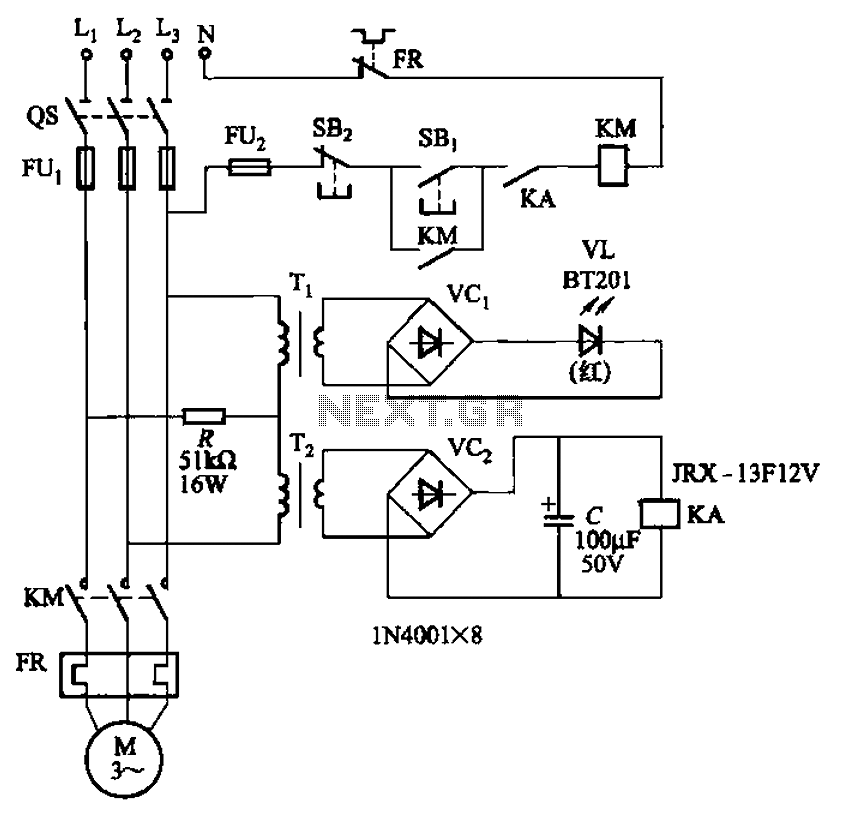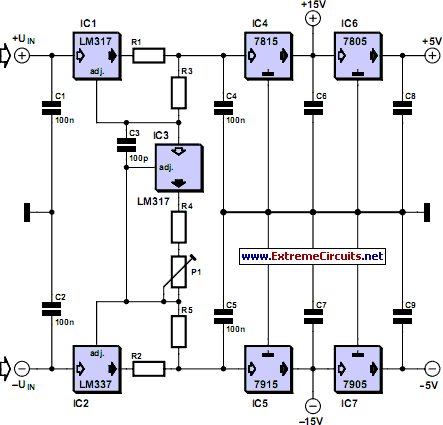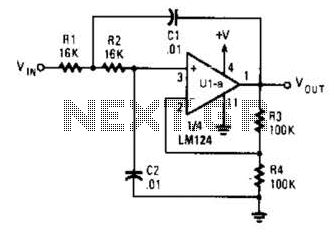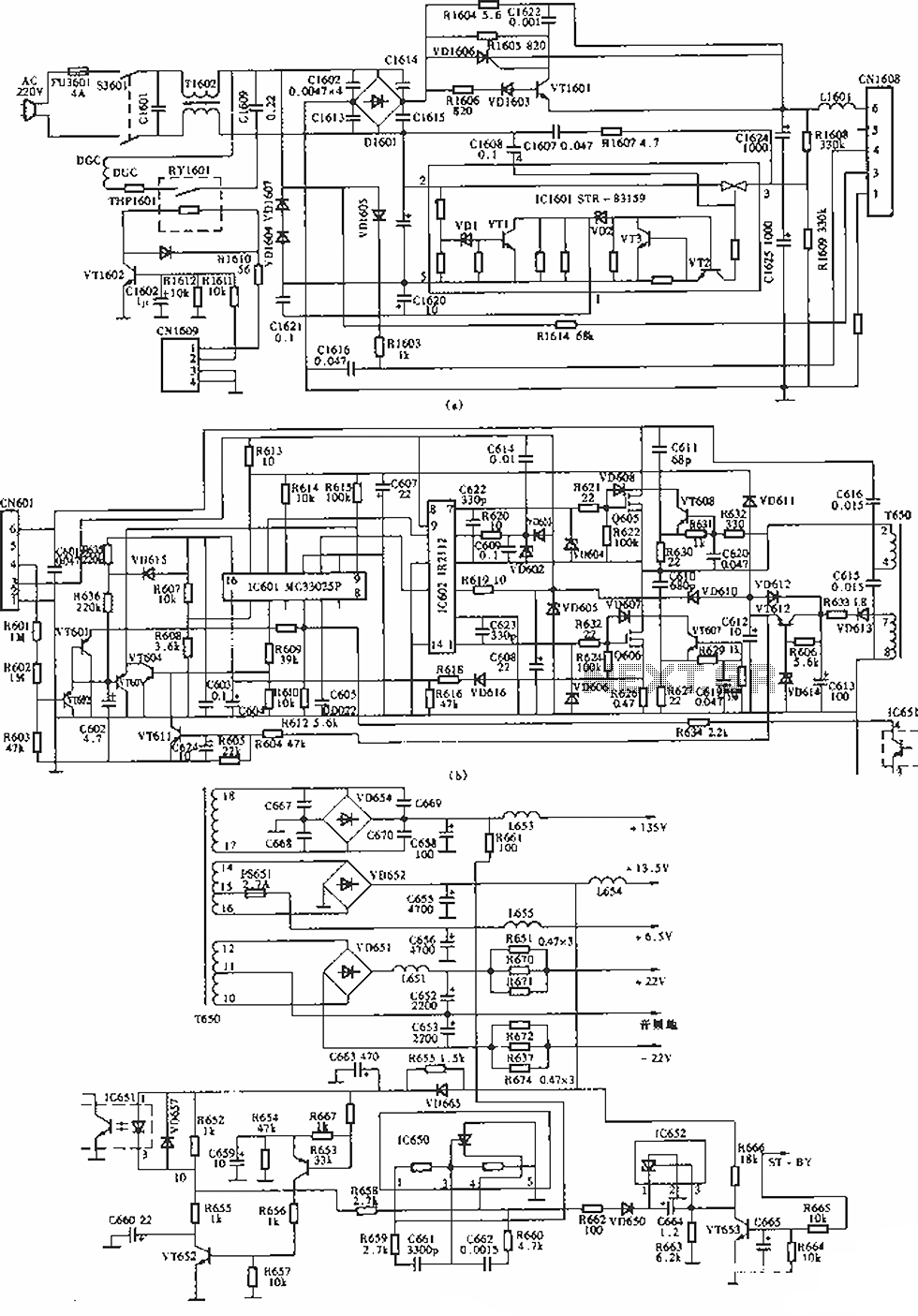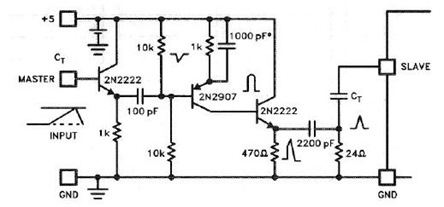
Tele Timer Circuit
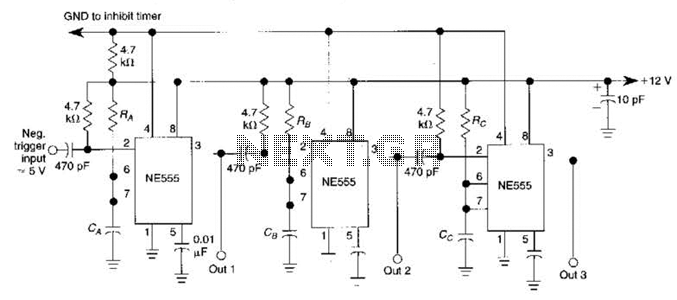
The circuit is designed around a 555 oscillator/timer, providing two distinct time periods. The longer time period can be adjusted between approximately 1 to 10 minutes, while the shorter time period is fixed at around three seconds. The operation of the dual timer begins when power is applied; capacitor C2 starts charging through resistors R3, R1, diode D1, and R4, initiating the long-term timer period. Once the voltage across C2 reaches the internal switching threshold of the 555 timer, the long-term timer completes its cycle, discharging C2 through resistor R2, diode D2, and pin 7 of the 555. During this discharge phase, pin 3 of the 555 is grounded, activating the piezo sounder. To configure the short time period to approximately four seconds, a 10 kΩ resistor should be used for R2, while a 47 kΩ resistor will set the period to about twenty seconds. It is recommended that the timing capacitor, C2, be a high-quality, low-leakage component.
The circuit utilizes the 555 timer IC, a versatile device widely used for timing applications. The 555 timer operates in astable or monostable modes, and in this configuration, it primarily functions as a monostable timer. The long time period is achieved by adjusting the resistances in the timing network, which includes R3, R1, and R4, in conjunction with the timing capacitor C2. The charging and discharging of C2 dictate the duration of the output signal at pin 3.
When the circuit is powered, the initial state allows C2 to charge through the resistors and diode, creating a gradual increase in voltage across C2. The 555 timer's internal comparator monitors this voltage, and when it reaches a specific threshold (typically 2/3 of the supply voltage), it triggers the output to go low, thus discharging C2. The discharge path through R2 and D2 ensures that the timer resets and prepares for the next cycle. The activation of the piezo sounder during this phase creates an audible alert, which is a crucial feature for applications requiring notification.
For the short time period, the selection of R2 is critical. A 10 kΩ resistor will yield a short duration of approximately four seconds, while a 47 kΩ resistor extends this duration to around twenty seconds. This flexibility allows the circuit to be tailored to specific timing needs. The choice of capacitor C2 is also important; a low-leakage capacitor minimizes timing inaccuracies and ensures reliable operation over extended periods.
Overall, this circuit is a practical implementation of the 555 timer for dual timing applications, combining both adjustable and fixed timing periods with an audible output, making it suitable for various electronic projects and applications where timing and notification are essential. The circuit is built around a 555 oscillator/ timer. The circuit provides two time periods. The long-running time period is adjustable from about 1 to 10 minutes, and the short time period is preset to about three seconds. Here`s how the dual timer operates. When the power is switched on, G2 begins to charge through R3, Rl, Dl, and R4 to start the long-term timer period.
When the voltage across C2 reaches the 555`s internal switching point, the long-term timer times out, discharging C2 through R2, D2, and pin 7 of the 555. During that time, pin 3 of the 555 is pulled to ground, activating the piezo sounder. To set the short time period to about four seconds, use a 10 k resistor for R2, and for about twenty seconds use a 47 k resistor. The timing capacitor, C2, should be a good-quality, low-leakage unit.
The circuit utilizes the 555 timer IC, a versatile device widely used for timing applications. The 555 timer operates in astable or monostable modes, and in this configuration, it primarily functions as a monostable timer. The long time period is achieved by adjusting the resistances in the timing network, which includes R3, R1, and R4, in conjunction with the timing capacitor C2. The charging and discharging of C2 dictate the duration of the output signal at pin 3.
When the circuit is powered, the initial state allows C2 to charge through the resistors and diode, creating a gradual increase in voltage across C2. The 555 timer's internal comparator monitors this voltage, and when it reaches a specific threshold (typically 2/3 of the supply voltage), it triggers the output to go low, thus discharging C2. The discharge path through R2 and D2 ensures that the timer resets and prepares for the next cycle. The activation of the piezo sounder during this phase creates an audible alert, which is a crucial feature for applications requiring notification.
For the short time period, the selection of R2 is critical. A 10 kΩ resistor will yield a short duration of approximately four seconds, while a 47 kΩ resistor extends this duration to around twenty seconds. This flexibility allows the circuit to be tailored to specific timing needs. The choice of capacitor C2 is also important; a low-leakage capacitor minimizes timing inaccuracies and ensures reliable operation over extended periods.
Overall, this circuit is a practical implementation of the 555 timer for dual timing applications, combining both adjustable and fixed timing periods with an audible output, making it suitable for various electronic projects and applications where timing and notification are essential. The circuit is built around a 555 oscillator/ timer. The circuit provides two time periods. The long-running time period is adjustable from about 1 to 10 minutes, and the short time period is preset to about three seconds. Here`s how the dual timer operates. When the power is switched on, G2 begins to charge through R3, Rl, Dl, and R4 to start the long-term timer period.
When the voltage across C2 reaches the 555`s internal switching point, the long-term timer times out, discharging C2 through R2, D2, and pin 7 of the 555. During that time, pin 3 of the 555 is pulled to ground, activating the piezo sounder. To set the short time period to about four seconds, use a 10 k resistor for R2, and for about twenty seconds use a 47 k resistor. The timing capacitor, C2, should be a good-quality, low-leakage unit.
